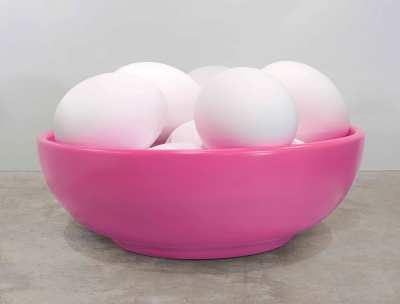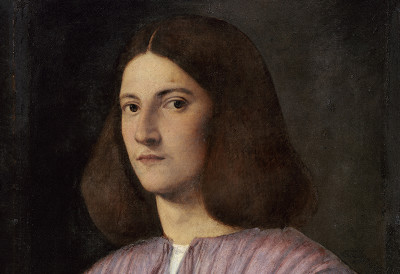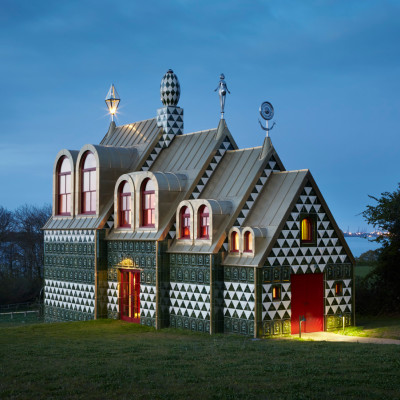10 minutes with… Tess Jaray RA
10 minutes with… Tess Jaray RA
By Harriet Baker
Published 7 August 2015
Each month we catch up with a different Royal Academician. Here, Tess Jaray RA tells us about a recent shift in her colour palette, and shares “the only rule” for aspiring artists.
-
Tess Jaray RA is a painter and printmaker. She studied at St Martin’s School of Art (1954 – 1957) and the Slade School of Art (1957 – 1960), where she later taught for many years.
Her work is characterised by the enigmatic interaction of forms and colours. The patterns she creates suggest spatial ambiguities and shifting structures which work on the viewer’s perceptions in subtle ways.
She has artworks in many public collections, including the Tate and the British Museum, and her paving designs can be seen in Centenary Square, Birmingham and the forecourt of Victoria Station. In 2010 she published a book of her collected writings, Painting: Mysteries and Confessions.
Jaray has also written widely. She published a book, The Blue Cupboard, about her family’s roots in Vienna (her parents emigrated in 1938, and she has written about the influence of Gustav Klimt upon her work), and has written about art for various catalogue essays and BBC Radio 3.
What are you working on at the moment?
I seem to have moved from using the brightest colours possible, to paintings that evoke just light and dark, with almost no colour at all. Who knows why? There is a machine that apparently determines these things, often without asking my own views on the matter, and the force is too great to resist. But at least it saves me the bother of asking what shall I paint now?
What is your earliest memory of art?
There was a wonderful artist named Harry Adams who lived next door to me, in a tiny 16th century cottage, with a studio added on. He was a landscape painter, and spent his whole life recording the exquisite Worcestershire landscape in all its seasons. He had some success in his youth, but was then forgotten. But not by me. I’ve written about him in my book The Blue Cupboard.
-

Tess Jaray RA, A Triptych, from Borromini, 2015.

Tess Jaray RA, Light I, 2015.
-
What work of art do you wish you’d created?
A very difficult question. As I believe that Piero’s Resurrection in San Sepolcro is possibly the greatest painting ever made, I could say that one, but it doesn’t really make much sense. Too remote, too impossible to imagine that a human being could have created it, let alone oneself. Perhaps one should say, the one I hope to do next week.
How do you know when a piece of work is finished?
It tells me.
Where were you when you found out that you had been elected as an Academician?
I was at home. Someone phoned and asked to speak to Tess Jaray RA. I said “this is she – but I’m not an RA”. The voice said “well you are now!” and it was Eileen Cooper RA.
What does the Royal Academy mean to you?
One of the greatnesses of this country has been its historical institutions. Ideally the RA should be somewhere that sets the highest possible standards. However, art may be the most difficult of subjects for a body of people to agree on. Probably that is partly what is so amazing about it; no one can agree on why it’s so important. The RA can seriously contribute to that debate.
-

Tess Jaray RA, sitting next to her blue cupboard
Photo: Anne Purkiss
-
If you were president of the RA for the day what you would you do?
I would make a ruling that every RA gets to be president for one day, over a period of four years, making sure they take responsibility for any decisions they make.
What would be your advice to aspiring artists?
There is only one rule for aspiring artists. That is, only become one if you have absolutely no choice, if your drive is so strong that nothing else could be contemplated. And if you understand that you are choosing an interesting life, but probably a very difficult one. If you think in terms of worldly success, forget it. The rewards are in the doing and in the breadth of art.
If you could choose three tracks of music that inspire you when you’re in the studio, what would they be?
If I’m only allowed 1 – 3 tracks, then I’ll say Richard Strauss’ Four Last Songs. (Yes, I can count. Just).






